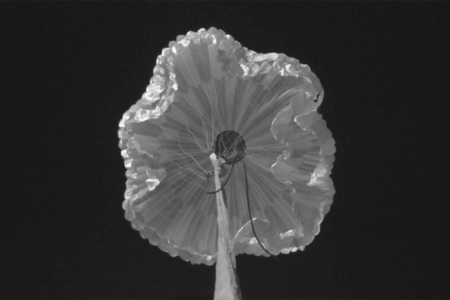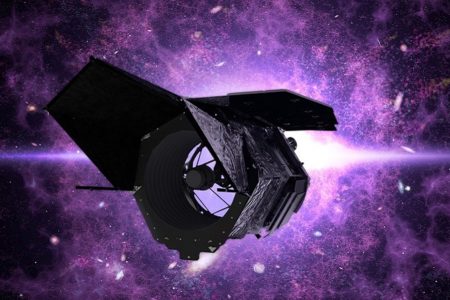
A front-facing portrait of VITAL (Ventilator Intervention Technology Accessible Locally), a ventilator designed and built by NASA’s Jet Propulsion Laboratory in Southern California. Credit: NASA/JPL-Caltech
Brazil recently approved a ventilator specially designed by Jet Propulsion Laboratory engineers to treat COVID-19 patients, JPL announced Monday.
NASA and JPL announced the invention of the Ventilator Intervention Technology Accessible Locally, or VITAL, in late-April. It had received emergency use authorization from the U.S. Food and Drug Administration (FDA) in late-March after being conceived, designed, and built in 37 days, according to JPL.
Twenty-eight manufacturers have since been licensed to produce the device. And with Monday’s announcement, Anvisa, Brazil’s counterpart to the FDA, Brazil is on track to begin making the potential life-saving machines, in partnership with a medical device manufacturer and a nonprofit research and development institution, JPL said in a written statement.
Leon Alkalai, JPL officer of strategic partnerships and VITAL project manager, said he was glad to see the work being put to good use.
“Our team is delighted to see how quickly the Brazilian licensees were able to replicate our prototype design, upgrade it where necessary, and also obtain local regulatory approval,” Alkali said. “They did so in record time and we are truly impressed with how quickly they were able to master the art and even improve on the design.”
NASA Administrator Jim Bridenstine commended the JPL engineers who designed and built VITAL.
“Throughout its history, NASA’s missions to explore off Earth have benefited life on Earth and provided a means through which the United States has been able to strengthen relationships globally,” Bridenstine said. “During these difficult times, we are particularly proud that the unparalleled expertise, abilities, and passion of our workforce will aid other countries in their response to the coronavirus pandemic.”
The initial design of the new ventilation system, as it is being employed in Brazil, uses a pneumatic pump to circulate air into the ventilator and was tested at the Icahn School of Medicine at Mount Sinai in New York City
“A modified design that relies on an air compressor could be deployed by a greater range of hospitals was tested at the UCLA Simulation Center in Los Angeles before also receiving a ventilator Emergency Use Authorization from the FDA,” according to the JPL statement.
“Several other manufacturers around the world are far along in their own efforts to bring to market a version of the ventilator, with JPL providing technical guidance,” the statement added.
“Throughout its history, NASA’s missions to explore off Earth have benefited life on Earth and provided a means through which the United States has been able to strengthen relationships globally,” said NASA Administrator Jim Bridenstine. “During these difficult times, we are particularly proud that the unparalleled expertise, abilities, and passion of our workforce will aid other countries in their response to the coronavirus pandemic.”
The ventilator prototype was designed at NASA’s Jet Propulsion Laboratory in Southern California, where spacecraft engineers felt compelled to contribute their know-how to address the pandemic. In just 37 days, they completed a functional prototype of VITAL, which received emergency use authorization from the FDA on March 24.
JPL ultimately created two versions of VITAL – a pneumatic version and another using compressed air. The CIMATEC/Russer version is based on the pneumatic version. With one-seventh the parts of a traditional ventilator, both versions models rely on parts readily available in supply chains to avoid competing for components required for traditional ventilators.
Designed specifically for the needs of COVID-19 patients, rather than the wide range of ailments treated with traditional ventilators, VITAL is simpler to build and more affordable. The CIMATEC/Russer model – which goes by the acronym VIDA, or “life” in Portuguese – will be available at a fraction of the cost of a traditional ventilator.
“This device benefits Brazil in multiple ways,” said CIMATEC Director Leone Andrade. “It can help Brazilians combat the virus while also providing an opportunity for industry.”
The 28 VITAL licensees were selected from 100 applicants based on their ability to manufacture and deliver the ventilator. Several other manufacturers around the world are far along in their own efforts to bring to market a version of the ventilator, with JPL providing technical guidance.
For more information about NASA’s work in fighting COVID-19, visit https://www.jpl.nasa.gov/news/news.php?feature=7733







